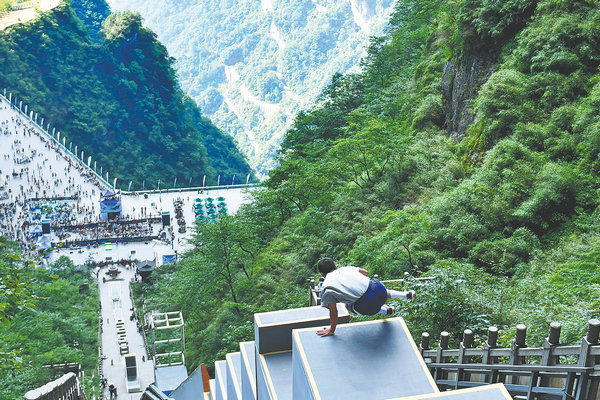

An attendee surnamed Han, from Northwest China's Ningxia Hui autonomous region, brought his 11-year-old son to Zhangjiajie to compete in the children's category.
According to Han, after trying different kinds of sports, his son is particularly fond of parkour. "Although he's only been training for a year, his abdominal muscles are firm now," Han says, adding that children can benefit from the mental and physical challenges of parkour.
"This is the biggest and most difficult course I've ever seen, and it's really exhausting," says Kacper Kosmider, a 20-year-old Polish parkour and traceur practitioner, adding that sport is a "universal language" and that parkour has become a perfect means of communication between competitors.
"When we compete with overseas players, we just need to make a gesture or movement to understand each other and overcome the language barrier," says Teng Gaozheng from Hubei province.
According to Wang Yanmin, an international parkour judge with the International Gymnastics Federation and chief director of this year's competition, parkour was introduced to China between 2005 and 2006.
"National parkour competitions were inaugurated in 2009, and a national training team for parkour was established in 2019," Wang says.
Wang adds that the majority of Chinese parkour enthusiasts are aged between 6 and 13, and from 18 to 38 years old.
"There are at least two professional parkour clubs or more than a dozen training institutions for children's parkour with a presence in most major cities in China," he says.